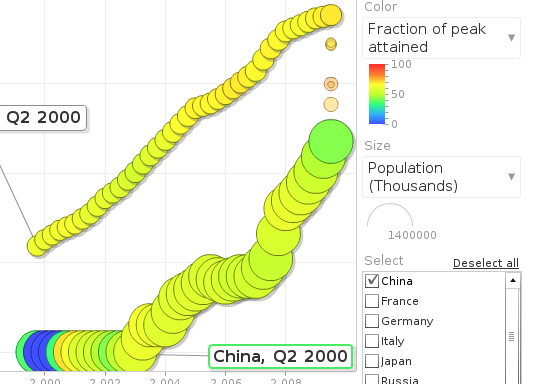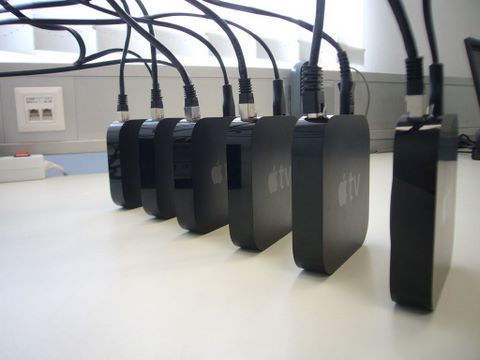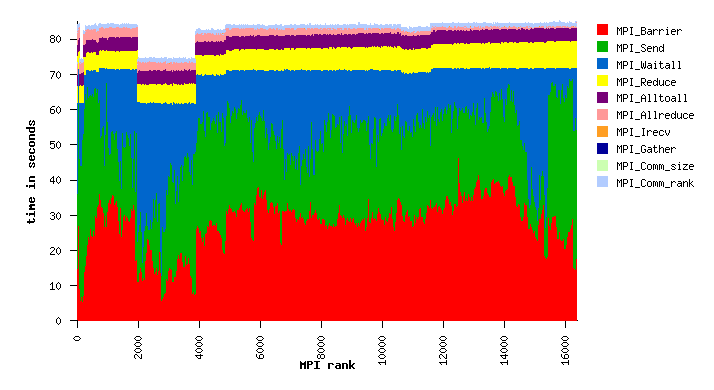- Chameleon
Reactive task-based programming for OpenMP+MPI - DASH
Distributed PGAS data structures and parallel algorithms - AppleTV Cluster
ARM-based energy-efficient parallel computing - Top500 Minder
Supercomputing and its socio-economic context - MADAME
Manycore application development and monitoring environment - IPM
Efficient and scalable integrated performance monitoring - ompP
OpenMP profiling and overhead assessment
Chameleon
Chameleon (2017-2020)
is a project funded by BMBF (the German Federal Ministry of
Education and Research) to support research
into
DASH
DASH (Datastructures and Algorithms for Scalability and Hierarchical Locality) is a project funded by DFG (The German Research Foundation) 2013-2018 under the SPPEXA Priority Programme Software for Exascale Computing. The goal of DASH is the realization of the PGAS (Partitioned Global Address Space) programming model in the form of a C++ template library. Given the reluctance to adopt a new programming language, a library-based approach has a better chance of being used in a wide variety of applications. A number of additional features are in the focus of the DASH project. First, the data structures developed in DASH will be able to represent and take advantage of the hierarchical locality levels in contemporary HPC system. Second, a focus on data-intensive science will be placed in the project by including support for parallel input and output directly into the library. Read more on the DASH web page»
AppleTV Cluster
The AppleTV cluster project is a research effort to investigate the feasibility of energy-efficient parallel computing on consumer electronic devices. Driven by strong market forces consumer electronic and mobile devices are becoming incredible powerful computers with multicore CPUs and integrated GPUs. We've built and benchmarked a small proof-of-concept cluster of 2nd generation AppleTV 2 devices which have the same hardware basis as the iPad (first generation).
The AppleTV cluster project also generated some media interest:
- Heise: Uni-Projekt: Cluster aus Apple-TVs
- MacLife (German computer magazine)
- Inside HPC: LMU Munich Builds ARM-Based Cluster with AppleTV Devices
- Genomeweb
Top500 Minder

The Top500 Minder project was a project for visualizing historic data of the Top500 Supercomputers list and its socio-economic environment using Gapminder-style motion charts. The Top500 list is a twice-yearly updated list of the fastest supercomputers, ranked by the Linpack benchmark, since June 1993. Gapminder motion charts are a great way to interactively explore the relative development of factors and entities over time. In addition to the raw Top500 data the charts also show the historical development of "FLOPs per capita" and "FLOPs per $GDP" for a variety of countries. Here is an article on the project on insideHPC.
Integrated Performance Monitoring (IPM)
IPM is a portable profiling infrastructure for parallel codes. It provides a low-overhead profile of the performance aspects and resource utilization in a parallel program. Communication, computation, and IO are the primary focus. While the design scope targets production computing in HPC centers, IPM has found use in application development, performance debugging and parallel computing education. The level of detail is selectable at runtime and presented through a variety of text and web reports. More information »
The OpenMP Profiler ompP
ompP is a profiling tool for OpenMP applications written in C/C++ or FORTRAN. ompP should work for most UNIX-like operating systems and OpenMP compilers. The profiling report of ompP becomes available immediately after program termination in a human-readable ASCII text format. ompP supports the measurement of hardware performance counters using PAPI and contains several advanced productivity features such as overhead analysis and detection of common inefficiency situations (performance properties).





